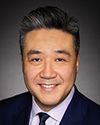Thank you very much, Mr. Chair.
I want to note that we're not hearing the volume from your speaker very loudly. I'll see how it is with the other members, but it wasn't very easy to hear you speaking.
Thank you for inviting us to speak on the topic of fraudulent calls in Canada, an issue that has been of particular concern for the CRTC.
As you know, we participated in this Committee’s study in March 2020, and we are pleased to provide an update on our activities.
I’m joined today by Steven Harroun, the CRTC’s Chief Compliance and Enforcement Officer, and Alain Garneau, Director of Telecommunications Enforcement.
Unwanted calls, which often are fraudulent in nature, seek not only to take advantage of Canadians, but also undermine their confidence in the telecommunications system. One of our priorities over the last few years has been to better protect Canadians and prevent as many of these calls from reaching them as possible.
There is no single solution, no silver bullet, that will put an end to this scourge. That's why we have put in place a robust strategy that relies on a number of different technical and regulatory policy solutions.
To begin, for the past two years, telecommunications service providers have been required to block numbers that we refer to as malformed numbers, which contain numbers that wouldn't normally be part of a phone number, a simple example being 000-000 and four digits, which is obviously not a real number. They get blocked automatically so they won't get through. Alternatively, providers could instead offer their subscribers call-filtering services, which provide similar but more advanced call management features.
Callers can also act in bad faith, though, using fake caller IDs to conceal their identities and intentions, a practice known as ID spoofing, and one that has grown phenomenally in recent years. To combat that illegitimate practice, we required service providers to implement STIR/SHAKEN in June of last year, something we discussed with this committee previously. Essentially that technology will enable providers to confirm whether a caller's identity can be trusted by authenticating and verifying the caller ID information for IP-based calls, which will allow Canadians to determine which calls are legitimate and which need to be treated with some caution, kind of a red light, yellow light and green light.
We're awaiting the first annual reports from the providers, and those will help us assess how implementation has progressed and help us understand what the results are revealing to us. What we do know, however, is that many of the technical issues we and the industry were confronting have been overcome, and also, smaller providers are coming on board to provide similar protections.
Another element in the battle against these calls is artificial intelligence, which is a promising new weapon. Sometime ago, Bell Canada developed a solution using artificial intelligence to block calls that were confirmed as being fraudulent in the company’s network. We allowed them to do a trial. We approved the trial and, encouraged by the results of that 15-month trial, we approved an application by them to implement that technology on a permanent basis last December. To date, that application has blocked more than 1.5 billion calls at source, and they have been intercepted. That's 1.5 billion times you didn't have to answer your phone to hear something you didn't want to hear.
The CRTC is also working with the telecommunications industry to develop a process to trace calls back to their point of origin in the network. The industry conducted a trial that yielded positive results, and so we directed providers to begin the rollout of the process toward its full deployment. The intelligence that we will be able to gather by pinpointing the origin of nuisance calls will help improve our enforcement efforts.
Of course, we continue to oversee the National Do Not Call List. Canadians have registered more than 14.6 million numbers on the list since it launched in 2008. Complaints submitted through the list operator help to inform our outreach efforts and enforcement actions.
Our ongoing work with the industry, the Canadian Anti-Fraud Centre and the RCMP enables us to exchange information on nuisance communications. We are also in regular contact with a number of federal departments and agencies, including the Canada Revenue Agency, the Competition Bureau, Employment and Social Development Canada and the Communications Security Establishment. Through this engagement, we can warn Canadians of illegitimate campaigns in a timely way to help them avoid becoming victims of fraud.
This Committee is well aware, however, that the issue of fraudulent calls is not limited to Canada.
It's not just in Canada. It's a problem in many countries, particularly English-speaking countries. In the United States alone—I think I've shared these numbers with you before—it's estimated that there is something in the order of 2,100 robocalls every second, and something approaching 50% of those may be fraudulent.
In particular, we have established formal arrangements to share information and expertise and to provide investigative support with our counterparts in the U.S., the U.K., Australia, New Zealand and Japan.
Through all of these initiatives and with the help of industry and our domestic and international enforcement partners, we are making significant progress in protecting Canadians and restoring faith and confidence in the telecommunications system.
With that said, my colleagues and I will be happy to attempt to answer any questions you may have.



